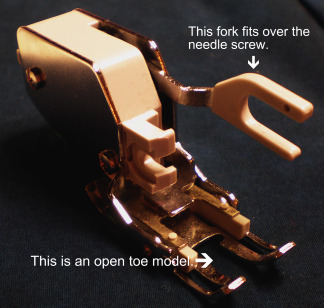This post contains affiliate links for which I receive compensation
Problems quilting on my home machine
by Bonnie
(Ohio)
Bonnie asks...
I quilt using my Bernina 440 with a walking foot.I have been having issues with puckering, stitch length, and the quilt seems to "stick" under the foot.
I pin baste, use top quality fabrics and thread, am using Quilter's Dream 100% cotton batting. I have lowered the presser foot pressure.
I'm still having these problems.
Help please.
Julie replies...
When everything seems to be going wrong, my best advice (even if you're ready to throw your machine out the window) is to go back to the beginning.If your machine stitches correctly without the walking foot, say just for regular piecing, than I suspect the trouble is in the set-up.
Find your machine's instruction manual and prepare a practice quilt sandwich with the same good quality fabrics and thread you are using in your quilts.
Go through the instructions for machine quilting with the walking foot step-by-step as if you'd never seen them before.
Check to see if there are any special instructions that came with the foot, too. (The ones that came with mine for my Viking D1 were specific about presser foot pressure.)

In particular, make sure that the foot is installed correctly.
A walking foot usually has an 'arm' or 'fork' (see right) that sits on top of or surrounds the needle clamp screw. If it isn't correctly situated, the fabric can't feed properly through the machine. That could account for the puckering and stitch length problems.
Too high a tension setting could be the culprit, too. If it's too tight, it will interfere with the feed dogs moving the fabric through far enough...kind of like two people pushing in from opposite sides of a door.
In garment sewing, when stitching thicker fabrics (like wool for a coat) the general rule is to loosen the tension a bit and lengthen the stitch length to accommodate the added thickness. While a quilt sandwich usually isn't as thick as several layers of wool coating material, it is thicker than usual. Try a longer stitch length and lower the tension by just a bit...maybe by about .5.
Work on only one adjustment at a time so that you can readily identify if the fix did any good. Note where you started so that you can go back to it if nothing is getting better. If you do see improvement, keep going in that direction. So if the problem is less when you reduce the tension by .5, then try reducing by .75 or 1.0. Test again and compare.
Use the practice sandwich so you don't have to rip anything out...that only increases your frustration.
If your machine is acting up for both piecing and quilting, then take it back to your dealer or to your repairman and have them take a look at it.
I hope this has helped in some small way.
Readers, we're always open to suggestions. Please share your knowledge using the 'comments' link found just below.
Thank you!
Piecefully,
Julie Baird
Editor















